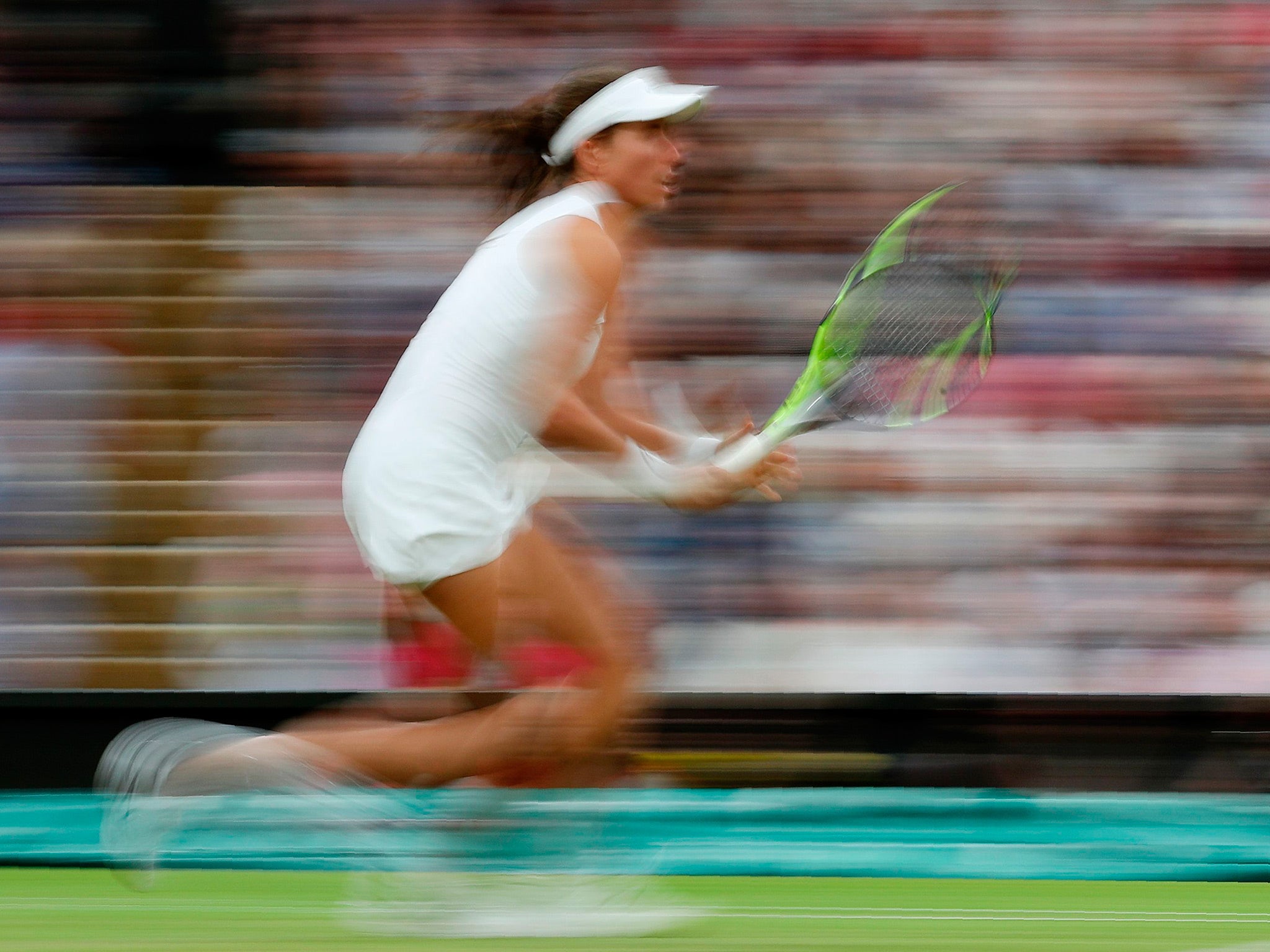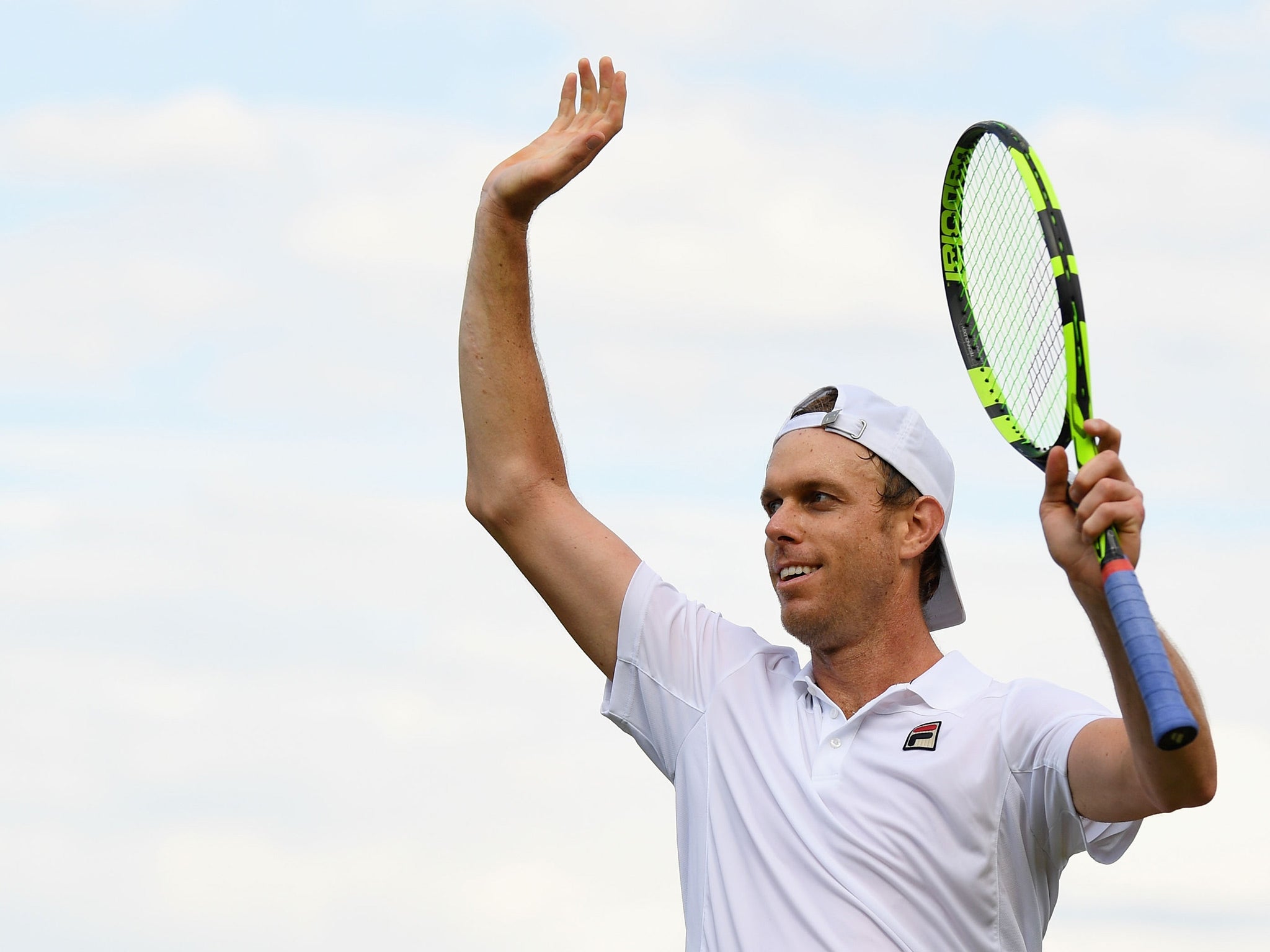Wimbledon 2017: Johanna Konta's victory was a masterclass in ball-striking and athleticism
People might say that Halep lost the match but coach Nick Bollettieri believes this was more about Konta winning

Your support helps us to tell the story
From reproductive rights to climate change to Big Tech, The Independent is on the ground when the story is developing. Whether it's investigating the financials of Elon Musk's pro-Trump PAC or producing our latest documentary, 'The A Word', which shines a light on the American women fighting for reproductive rights, we know how important it is to parse out the facts from the messaging.
At such a critical moment in US history, we need reporters on the ground. Your donation allows us to keep sending journalists to speak to both sides of the story.
The Independent is trusted by Americans across the entire political spectrum. And unlike many other quality news outlets, we choose not to lock Americans out of our reporting and analysis with paywalls. We believe quality journalism should be available to everyone, paid for by those who can afford it.
Your support makes all the difference.Holy mackerel! Holy cow! Holy smoke! If I’ve ever seen a better women’s match than Johanna Konta’s victory over Simona Halep then I’m struggling to remember it. Yes, there have been matches with even greater drama on bigger occasions than a Grand Slam quarter-final, but in terms of the ball-striking and athleticism of the two players this was something else.
People might say that Halep lost the match because her level dipped in the closing stages, but I would say this was more about Konta winning than her opponent losing.
It was Konta’s non-stop aggression that proved decisive. Man, she whacks the ball just about every time she has the chance to do so. She takes the ball early and hits it beautifully on both sides. Her lateral movement is also excellent.
For me the only question mark about Konta’s game is her second serve, though when you’re hitting the target with 89 per cent of your first serves – as she was in the opening set – that hardly matters.
When you look at Konta today it’s hard to believe that she used to go into mental meltdowns. She’s so composed that when you look at her face you can never guess whether she is winning a match or losing it.
I think the mistake Halep made was to get stuck into a slugging match from the baseline. Konta is so strong that I thought she was always going to come out on top in those circumstances.
I would have liked to see Halep throw in some more junk balls, to try and disrupt Konta’s rhythm. I can only recall her doing that once – and Konta did not quite know how to handle it.
After the way Halep also let slip the French Open final against Jelena Ostapenko, people will start questioning her mental strength, but I’m not sure this was in the same category as that defeat.
At Roland Garros Halep didn’t force home her advantage in the final set, but here I would give the credit to Konta, although the crowd also played their part. When you’re losing and the whole of the crowd appear to be behind your opponent the Centre Court can be a lonely place.
Wednesday’s match of the day

If Sam Querrey is going to beat Andy Murray he’s going to have to have one of the best serving days of his life. Murray has some of the best returns out there, but Big Sam can hit the ball with enormous power.
Nevertheless, it’s not all about brute force. I’d like to see Sam throw in some kicker serves every now and then on his first serves and get into the net behind them. My fellow American has some good volleys and he’s not going to win the match from the back of the court. The occasional surprise rush to the net would be a good tactic.
Murray knows that the longer the rallies go on, the more it will favour him. He’ll want to keep Querrey on the move. When he gets Sam moving laterally the big man will be in trouble if he has to hit balls on the run. Murray has to be the favourite. He’s taking one match at a time and is looking better with each match.
Tales from the IMG Academy
Before the International Management Company bought my academy in 1987 I was asked whether I would be interested in selling to a sheikh, who wanted somewhere where he and his friends could improve their tennis.
I told the sheikh’s representative that I would be happy to show him around and he duly arrived with a personal staff of 20 Filipinos. Whenever the sheikh played he would bring an umpire with him who would shout “out” whenever an opponent’s shot went anywhere near a line.
By the time the sheikh had run up a bill for $100,000 – for rooms and meals, clothing, equipment and court time – we presented him with a bill. He was shocked, saying he thought he had been invited as a guest and never dreamed he would be insulted by being handed a bill. He and his entourage promptly left. We never saw him again.
A tip from the top
I often think that people put too much emphasis on the serve rather than the return. After all, every point starts with a serve and with a return. All too often you see players practising their serve, but how much time do they spend on their returns?
At the IMG Academy we get players to practise their returns when their hitting partners or their opponents are practising their serves. I think that’s what players at every level should do. If you’re playing a match, your opponent’s warm-up serves are a great chance for you not only to get a look at their serves but also to practise your returns.
The perfect tennis player
Each day during Wimbledon I’m building a picture of the ideal tennis player by looking at a different aspect of the game. Today: the lob. In most of these categories I find it hard to choose between a number of players, but I have no hesitation in saying that Aaron Krickstein had the greatest lob I’ve ever seen, particularly on the backhand side.
Aaron, who was in the very first intake of players into my academy at Bradenton, hit two-handed backhands, which I think gives you a big advantage when you’re hitting a lob. You have more feel and can use the top hand to control the shot.
Of today’s players, I particularly admire Rafael Nadal and Andy Murray – two more guys with double-handed backhands - for their lobs. Nadal in particular plays it with great disguise. People talk about him as a guy with a great temperament and someone who covers the court exceptionally well, but he is also a great shot-maker.
Join our commenting forum
Join thought-provoking conversations, follow other Independent readers and see their replies
Comments